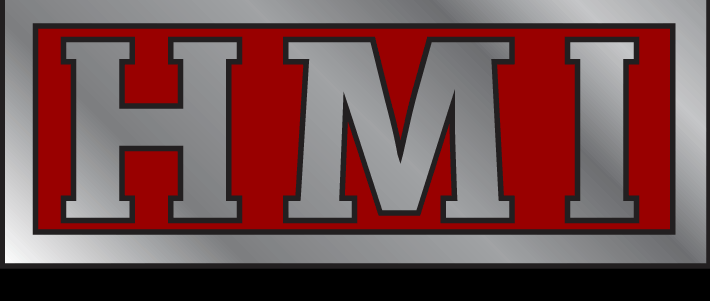Water Truck Manual

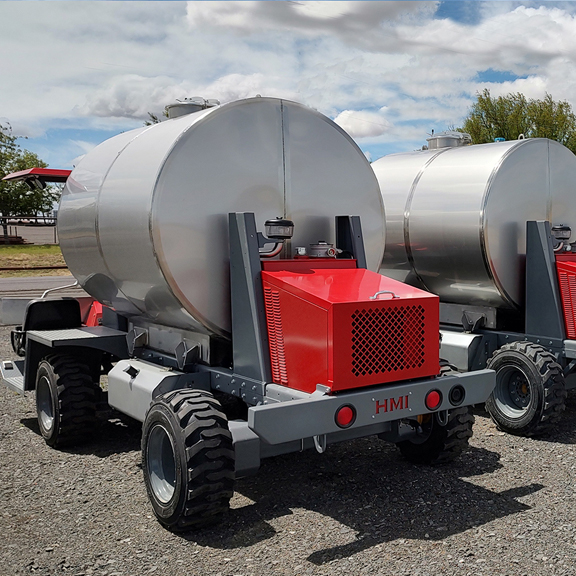
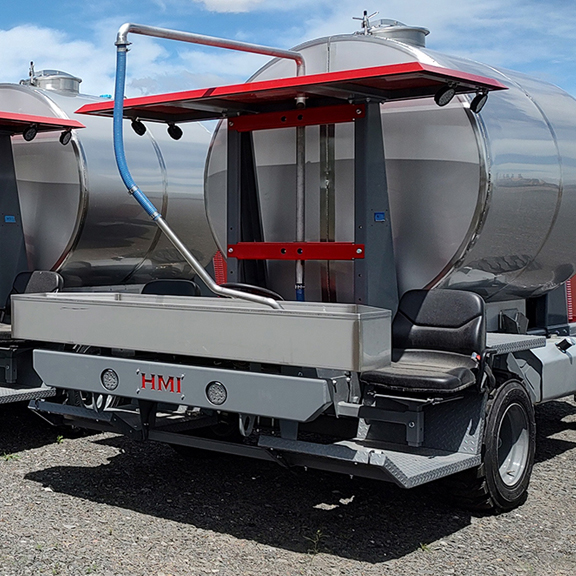
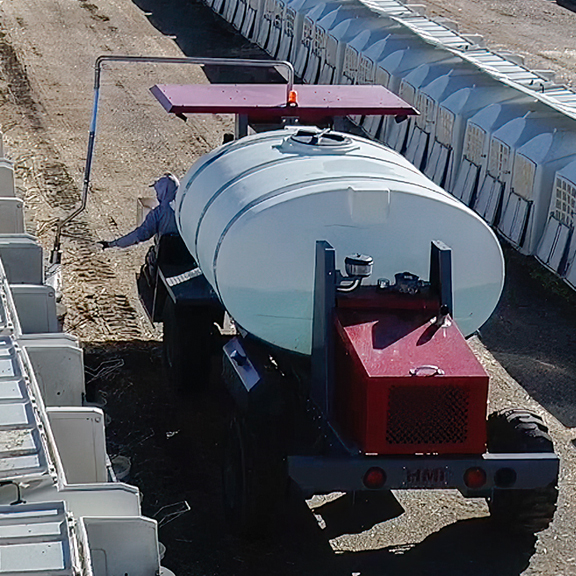
Listed below are common practices that may or may not be applicable to the products described in this manual.
Look for the Safety Alert Symbol
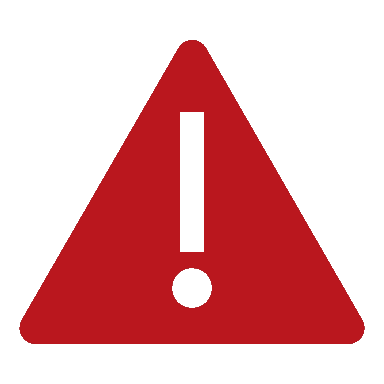
The SAFETY ALERT SYMBOL indicates there is a potential hazard to personal safety and extra precaution must be taken. When you see this symbol, be alert and carefully read the message that follows it. Hazard control, and accident prevention are dependent upon the awareness, concern, prudence and proper training of personnel involved in the operation, transport, maintenance, and storage of equipment.
Be Aware of Signal Words
A signal word designates a degree or level of hazard seriousness. They are:
DANGER:
Indicates a hazardous situation that, if not avoided, will result in death or serious injury.
WARNING:
Indicates a hazardous situation that, if not avoided, could result in death or serious injury.
Listed below are common practices that may or may not be applicable to the products described in this manual.
Safety at All Times
Careful operation is your best assurance against an accident. All operators, no matter how much experience they may have, should carefully read this manual and other related manuals before operating this power machine and this implement.
- Thoroughly read and understand the “Safety Label” section. Read all instructions noted on them.
- Do not operate the equipment while under the influence of drugs or alcohol as they impair the ability to safely and properly operate the equipment.
- The operator should be familiar with all functions of the power machine and attached implement, and be able to handle emergencies quickly.
- Keep all bystanders away from equipment and work area.
- Operate power machine and controls from the driver’s seat only.
- Never dismount from a moving power machine or leave power machine unattended with engine running.
- Do not allow anyone to stand between implements and power machine while attempting to connect or disconnect them.
- Keep hand, feet and clothing away from power-driven parts.
- While transporting and operating equipment, watch out for objects overhead and along side such as fences, trees, buildings, wires, etc.
- Do not turn power machine so tight as to cause hitched implement to contact the power machine’s rear wheel.
- Store implement in a safe and secure area where children do not plate. When needed, secure implement against falling with support blocks and/or shipping locks.
Safety Precautions for Children
Tragedy can occur if the operator is not alert to the presence of children. Children are generally attracted to implements and their work.
- Never assume children will remain where you last saw them.
- Keep children out of the work area and under the watchful eye of a responsible adult.
- Be alert and shut the implement and power machine down if children enter the work area.
- Never carry children on the power machine or implement. There is not a safe place for them to ride. They may fall off and be run over or interfere with the control of the power machine.
- Never allow children to operate the power machine, even under adult supervision.
Power Machine Shutdown & Storage

- If engaged, disengage power take-off.
- Park on solid, level ground and lower implements to ground or onto support blocks.
- Put power machine in part or set park brake
- Turn off engine and remove ignition key to prevent unauthorized starting.
- Relieve all hydraulic pressure to auxiliary hydraulic lines.
- Wait for all components to stop before leaving the operator’s seat.
- Use steps, grab-handles and anti-slip surfaces when stepping on and off the power machine.
Use a Safety Chain
- A safety chain will help control drawn machinery should it separate from the power machine or tow vehicle.
- Use a chain with the strength rating equal to or greater than the gross weight of the towed implement
- Attach the chain to the power machine’s or tow vehicle’s draw bar support or other specified anchor location. Allow only enough slack in the chain to permit turning.
- Always hutch the implement to the machine towing it. Do not use the safety chain to tow the implement.
Tire Safety
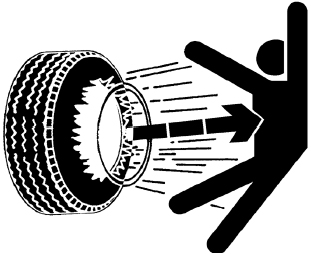
- Tire changing can be dangerous and must be performed by trained personnel using the correct tools and equipment.
- Always properly match the wheel size to the properly sized tire.
- Always maintain correct tire pressure. Do not inflate tires above the recommended pressures shown in the Operator’s Manual or printed on the tires themselves.
- When inflating tires, use a clip-on chuck and extension hose long enough to allow you to stand to one side and NOT in front of or over the tire assembly. Use a safety cage if available.
- Securely support the implement when changing a wheel.
- When removing and installing wheels, use wheel handling equipment adequate for the weight involved.
- Make sure wheel bolts have been tightened to the specified torque.
Practice Safe Maintenance

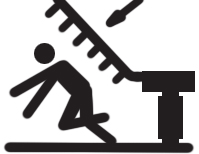
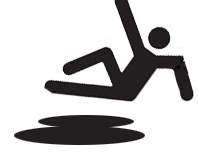
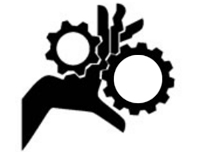
- Understand procedure before doing work. Refer to the Operator’s Manual for additional information.
- Work on a level surface in a clean, dry area that is well-lit.
- Lower implement to the ground and follow all shutdown procedures before leaving the operator’s seat to perform maintenance
- Do not work under any hydraulically supported equipment. It can settle, suddenly lead down, or be lowered accidentally. If it is necessary to work under the equipment, securely support it with stands or suitable blocking beforehand.
- Use properly grounded electrical outlets and tools.
- Use correct tools and equipment for the job that are in good condition.
- Allow equipment to cool before working on it.
- Disconnect battery ground cable (-) before servicing or adjusting electrical systems or before welding on implement.
- Inspect all parts. Make certain parts are in good condition & installed properly.
- Replace parts on this implement with genuine Hatfield parts only. Do not alter this implement in a way which will adversely affect its performance.
- Do not grease or oil implement while it is in operation.
- Remove any buildup of grease, oil, and/or debris.
- Always make sure any material and waste products from the repair and maintenance of the implement are properly collected and disposed.
- Do not weld or torch galvanized metal as it will release toxic fumes.
Prepare for Emergencies
- Be prepared if a fire starts
- Keep a first aid kit and fire extinguisher handy.
- Keep emergency number for doctor, ambulance, and fire department near the phone.
Use Safety Lights and Devices
- A slow-moving power machine can create a hazard when driven on public roads. They are difficult to see, especially at night. Use the Slow-Moving Vehicle (SMV) Sign when on public roads.
- Flashing warning lights and turn signals are recommended whenever driving on public roads.
Wear Personal Protective Equipment
- Wear protective clothing and equipment appropriate for the job such as safety shoes, safety glasses, hard hat, dust mask, and ear plugs.
- Clothing should fit snug without fringes and pull strings to avoid entanglement with moving parts.
- Prolonged exposure to loud noise can cause hearing impairment or hearing loss. Wear suitable hearing protection such as earmuffs or earplugs.
- Operating a machine safely requires the operator’s full attention. Avoid wearing headphones while operating
Use Seat Belt and ROPS
- Use of a CAB or roll-over-protective-structures (ROPS) and seat belt is recommended in almost all power machines.
- If ROPS is in the locked-up position, fasten seat belt snugly and securely to help protect against serious injury or death from falling and machine overturn.
Avoid High Pressure Fluids
- Escaping fluid under pressure will penetrate the skin or eyes causing serious injury.
- Relieve all residual pressure before disconnecting hydraulic lines or performing work on the hydraulic system.
- Make sure all hydraulic fluid connections are properly tightened/torqued and all hydraulic hoses and lines are in good condition before applying pressure to the system.
- Use a piece of paper or cardboards, NOT BODY PARTS, to check for suspected leaks.
- Wear protective gloves and safety glasses or goggles when working with hydraulic systems.
- DO NOT DELAY. If an accident occurs, seek immediate
Keep Riders Off Machinery
- Never carry riders on the tractor or implement.
- Riders obstruct operator’s view and interfere with the control of the power machine.
- Riders can be struck by objects or thrown from equipment.
- Never use the power machine to lift or transport riders.
Avoid Crystalline Silica (quartz) Dust
Because crystalline silica is a basic component of sand and granite, many activities at construction sites produce dust containing crystalline silica. Trenching, sawing and boring of material containing crystalline silica can produce dust containing crystalline silica particles. This dust can cause serious injury to the lungs (silicosis).
There are guidelines which should be followed if crystalline silica (quartz) is present in the dust.
- Be aware of and follow OSHA (or other local, State, or Federal) guidelines for exposure to airborne crystalline silica.
- Know the work operations where exposure to crystalline silica may occur.
- Participate in air monitoring or training programs offered by the employer.
- Be aware of and use optional equipment controls such as water sprays, local exhaust ventilation, and enclosed cabs with positive pressure air conditioning if the machine has such equipment. Otherwise, respirators shall be worn.
- Where respirators are required, wear a respirator approved for protection against crystalline silica containing dust. Do not alter respirator in any way. Workers who use tight-fitting respirators can not have beards/mustaches which interfere with the respirator seal to the face.
- If possible, change into disposable or washable work clothes at the work side; shower and change into clean clothing before leaving the work site.
- Do not eat, drink, use tobacco products, or apply cosmetics in areas where there is dust containing crystalline silica.
Handle Chemicals Properly
- Protective clothing should be worn.
- Handle all chemicals with care.
- Follow instructions on container label.
- Agricultural chemicals can be dangerous. Improper use can seriously injure persons, animals, plants, soil, and property.
- Inhaling smoke from any type of chemical fire can be a health hazard.
- Store or dispose of unused chemicals as specified by the chemical manufacturer.
Dig Safe — Avoid Underground Utilities
- USA: Call 811. CAN: digsafecanada.ca Always contact your local utility companies (electrical, telephone, gas, water, sewer, and others) before digging so that they may mark the location of any underground services in the area.
- Be sure to ask how close you can work to the marks they positioned.
Transport Safely
- Comply with federal, state and local laws.
- Use towing vehicle and trailer of adequate size and capacity. Secure equipment towed on a trailer with tie downs and chains
- Sudden braking can cause a towed trailer to swerve unexpectedly. Reduce speed if towed trailer is not equipped with brakes.
- Avoid contact with any overhead utility lines or electrically charged conductors.
- Always drive with load on end of loader arms low to the ground.
- Always drive straight up and down steep inclines with heavy end of skid steer on the “uphill” side
- Maximum transport speed for an attached equipment is 20 mpg (32km/h). DO NOT EXCEED
- As a guideline, use the following maximum speed weight ratios for attached equipment: 20 mph (32 km/h) when weight of attached equipment is less than or equal to the weight of the tow vehicle. 10 mph (16 km/h) when weight of attached equipment exceeds the weight of the tow vehicle but not more than double the weight.
- IMPORTANT: Do not tow a load that is more than double the weight of the vehicle towing the load.
Safety Labels
Your Water Truck comes equipped with all safety labels in place. They were designed to help you safely operate your equipment. Read and follow their directions.
- Keep all safety labels clean and legible.
- Refer to this section for proper label placement. Replace all damaged or missing labels. Order new labels from www.hatfieldmfg.com.
- Some new equipment installed during repair requires safety labels to be affixed to the replaced component as specified herein. When ordering new components make sure the correct safety labels are included in the request.
- Refer to this section for proper label placement. To install new labels: Clean Surface area where label is to be placed. Spray soapy water onto the cleaned area. Peel backing from label and press label firmly onto the surface. Squeeze out air bubbles with edge of a credit card or with a similar type of straight edge.
Labels for your Water Truck are sold in packages containing all the safety labels you need.
Record your machine details: Serial Number, Model Number and Delivery Date.
Introduction
Your Grain Truck most likely will arrive fully assembled and ready for service. Please follow all break in and service/maintenance instruction in the manual for the engine of this machine.
Keypad Keys
- Pump On/Off, Volume Selection: Turns the pump on and cycles through 2qt (red), 3qt (yellow), 4qt (green), and continuous flow modes (blue). The fifth press shuts the pump off (no light).
- Calibrate: Press and hold this button for 5 seconds to enter calibration mode for the currently selected volume.
- Two Speed (if available): Red light will be on if disabled. Amber Light indicates high speed is available. Green Light indicates vehicle is in high-speed mode, use with caution to move vehicle between locations.
- Delay: Sets the time between metered dispensing cycles. Pressing this button cycles 1 second (red), 2 seconds (yellow), 3 seconds (green), and 5 seconds (blue).
- Park Brake: Default is on when vehicle is started, must be turned off before moving the vehicle.
- Lights: Default is off (strobe is always on), press once for headlights and taillights (yellow), press again to add canopy work lights (green), press again to turn them all off (red).
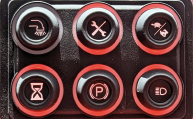
Top Row: Two speed (if active), unused, push rack forward
Bottom Row: Lights, parking brake, push rack back
Two-Speed
- If the light on the Two Speed Button is red, then high speed is not available. If the light is amber, high speed is available. To activate, vehicle must be moving forward. The light will turn amber. Press the button, the light will turn green and the vehicle will be in high speed. Press the button again to return to low speed. When the vehicle goes to neutral it will automatically return to low speed.
Operating the Water Truck
- 1. To operate the Water Truck:
- 2. Check the Levels of the Engine Oil, Engine Fuel and Hydraulic Oil.
- 3. Turn the key switch to the “On” position and wait for the Glow Plug Light to turn off.
- 4. Turn the key to the start position and hold, once the engine starts release the key.
- 5. After the engine warms up adjust the throttle to at least 50%
- 6. Close the drain valve and fill the tank with the water or other liquid to be dispensed.
- 7. Turn the pump on continuous and push the air out of the lines, air in the lines will cause inaccurate metered dispensing.
- 8. Now is the time to check the calibration, if needed.

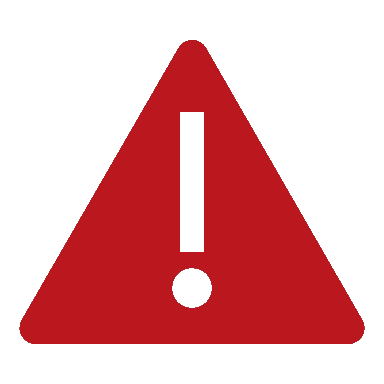
DANGER
To avoid serious injury or death:
- Do not turn the pump on without liquid in the tank. Running the pump dry will burn it up very quickly. Hatfield Mfg., Inc. is not responsible for and will not warranty damage caused by running the pump dry.
Calibration
Your Water Truck is factory calibrated, but you should check the calibration and make any adjustments to the dispensed amount so that it best fits your operation. Each volume must be calibrated independently as follows:
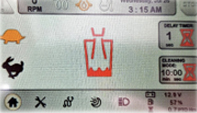
- 1. With liquid in the tank, turn the pump on to the dispensing volume you wish to calibrate.
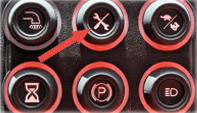
- 2. Press and hold the Calibrate button for 5 seconds.
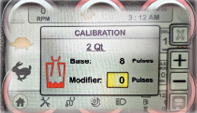
- 3. The screen should now show a popup window with a set number of pulses and a modifier.
- 4. Use the “+” and “-“ buttons on the screen to adjust the volume up or down.
- 5. At any time from this screen, you can do a test pour to see if the volume is correct.
- 6. When it is correct, press the calibrate button again to exit calibration.
- You can now repeat this process with the other two volume settings or start dispensing.
Maintenance
Maintenance on your Water Truck is fairly straight forward.
Engine:
- Kubota V1505
- Maintain the engine according to the Engine Manual provided.
- Numbers for Components:
| Header | Kubota | Wix |
|---|---|---|
| Fuel Filter | 6A320-59930 | 33390 |
| Oil Filter | HH160-32093 | 51344 |
| Air Filter | 15741-11080 | 46496 |
| Fan Belt | 6C430-59280 | This is a table cell |
Lubrication:
- There are 4 grease points on the vehicle that should be greased as needed with a high-quality bearing grease
- Top and Bottom of each front steering knuckle. (4)
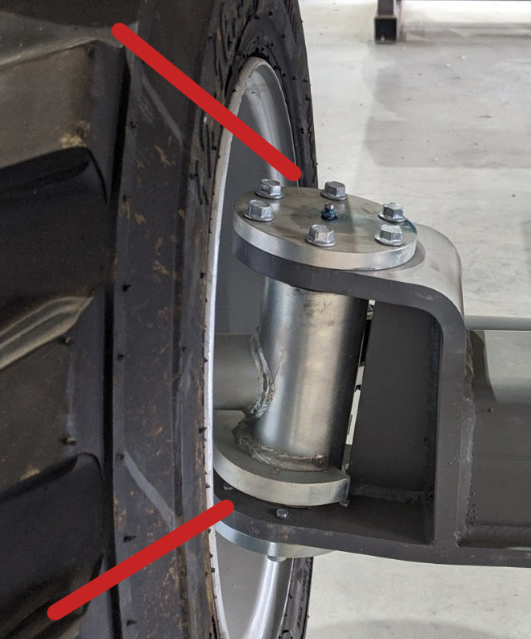
Hydraulic Oil
- Oil: Chevron THF 1000 (or equivalent)
- Filter: RBSZ10ELEMENT (order from HMI)
- Fluid should be visible in the Sight Glass when warm, if not, top off with Chevron THF 1000 (or equivalent) only until it is visible in the sight glass. DO NOT OVERFILL!
- Hydraulic Fluid and Filter should be replaced every 1500 operating hours.
Wheels and Tires
- Tires: SKS-1 12.0 X 16.5
- Wheel: 9.75 x 16.5 Bolt Pattern: 8 on 8
Throttle and Hydrostat
- Throttle and Hydrostat cables may need to be adjusted over time and even replaced. If the operator lever won’t stay where you put them, you can adjust the friction in them by tightened the friction nut underneath the console.
Filter
- Between the Pump and the Output nozzle on the right-hand side of the machine, you will find a screen filter, flow meter and metering valve. When the tank is empty, these items can be checked, maintained and replaced if necessary. The filter housing will unscrew from the base so it can be checked and the screen replaced if necessary.
Flow Meter
- The flow meter in your water truck has a small turbine in it that read the flow by spinning. If the flow is not stopping at the end of a metered pour, it is normally due to debris blocking the flow meter from spinning. Uncoupling the flow meter and clearing debris will usually solve the problem. It is a good idea to check the filter and make sure the screen is properly installed and in good repair if you have this issue.
Metering Valve
- There are two different Metering Valves that we use on our machines. The most common is a Stainless Steel bodied diaphragm valve, the other is the optional pinch valve. Both should be fairly maintenance free. If you are experiencing sluggish opening or closing of the valve, or failure to open or fully close, you may need to service the valve or replace it.
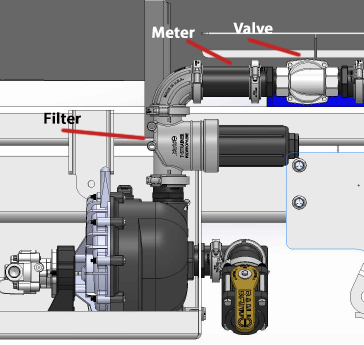
Fuse and Relay Panel
- The Fuse and Relay Panel can be located underneath the bolted panel on the passenger side of the center console. A socket wrench or impact driver with a Torx 40 bit will be required to remove the panel.

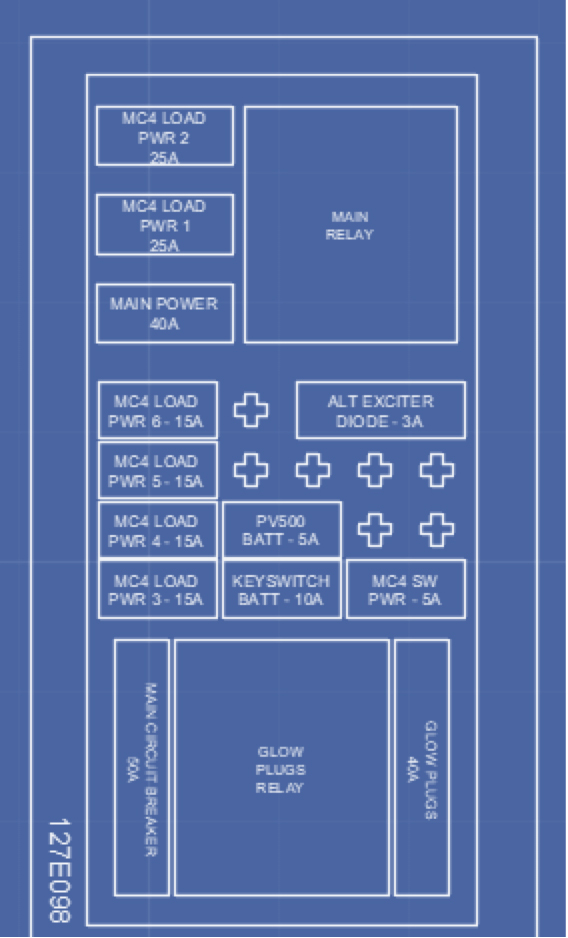
- The Fuse and Relay Panel can be located underneath the bolted panel on the passenger side of the center console. A socket wrench or impact driver with a Torx 40 bit will be required to remove the panel.
Main Office & Manufacturing
1823 Shoestring Road | Gooding, Idaho 83330 | Toll Free: 800.359.8171 | 208.934.5182 | Fax: 208.934.8892
Sales | Parts | Manuals | Financing | Our Company | Contact Us
2025 Hatfield Manufacturing, Inc.
